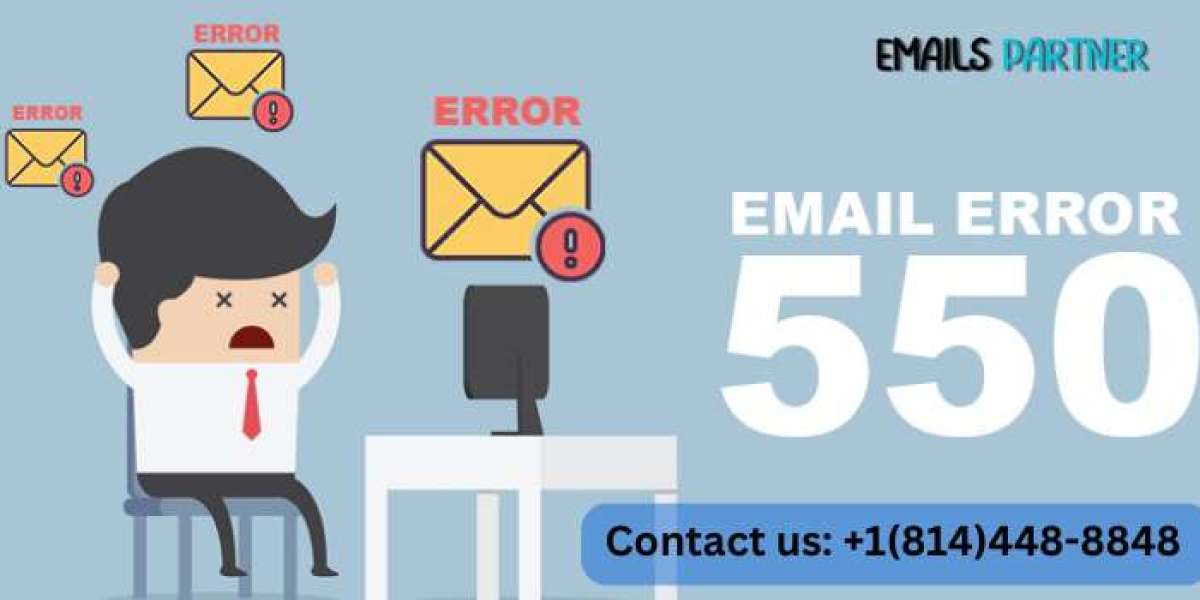SMTP Email Error 500 5.7.1 is a common issue that many users encounter when sending or receiving emails. This error typically indicates that an email was blocked or rejected due to authentication failures, security policies, or restrictions on the server. SMTP (Simple Mail Transfer Protocol) is essential for sending emails, and when this error arises, it can disrupt communication significantly.
This article will explain the causes of SMTP Email Error 500 5.7.1, provide solutions for resolving the issue, and offer preventive measures to avoid it in the future. Whether you’re troubleshooting an individual account or managing multiple email services, this guide will help you resolve the error effectively.
What is SMTP Email Error 500 5.7.1?
SMTP Email Error 500 5.7.1 occurs when an email server rejects a message due to policy violations or authentication problems. It often comes with a message like:
- "500 5.7.1 Authentication required"
- "5.7.1 Unable to relay"
- "Blocked due to security policies"
This error prevents the email from being sent, indicating that the server is blocking the message, either because the sender failed authentication or the server identified it as potentially spammy or harmful.
Causes of SMTP Email Error 500 5.7.1
There are several reasons why this error might occur. Understanding the underlying cause can help you resolve the issue faster:
1. Authentication Problems
If the outgoing email server (SMTP) requires authentication, and the sender’s credentials are missing or incorrect, the server will reject the email.
2. Relay Restrictions
Some servers prevent unauthorized users from relaying messages through them. If your email is flagged as an unauthorized relay attempt, you’ll receive the 500 5.7.1 error.
3. Blocked IP or Domain
If the IP address or domain sending the message is blacklisted for spam or malicious activity, the email server will block the message.
4. Email Server Security Policies
Organizations may implement strict security policies to protect their email systems. These policies might block certain senders or reject messages that don’t meet predefined standards.
5. Misconfigured SMTP Settings
Incorrect SMTP settings in email clients like Outlook, Thunderbird, or mobile apps can trigger the 500 5.7.1 error.
How to Resolve SMTP Email Error 500 5.7.1
Here are effective steps to troubleshoot and fix SMTP Email Error 500 5.7.1:
1. Verify SMTP Authentication
- Ensure that your email client has SMTP authentication enabled.
- Use the correct username and password for the outgoing email server.
- In Outlook, go to Account Settings > More Settings > Outgoing Server and check My outgoing server (SMTP) requires authentication.
2. Correct the SMTP Server Settings
- Make sure the outgoing server address (SMTP) is correctly entered.
- Use the appropriate port number (often 465 or 587).
- Verify that SSL/TLS encryption is enabled, if required by your email provider.
3. Check for IP Blacklisting
- Use online tools to check if your IP address or domain is blacklisted.
- If your IP is blacklisted, contact your email provider or the blacklist administrator to resolve the issue.
4. Contact Your Email Service Provider
- If you encounter the error repeatedly, contact your email provider for assistance. They can confirm if any security policies or restrictions are causing the error.
- Request whitelisting if your messages are being mistakenly blocked.
5. Update Email Client Software
Outdated email clients may fail to comply with new security standards, triggering the 5.7.1 error. Ensure your email client software is updated to the latest version.
Troubleshooting SMTP Configuration Issues
Misconfigured settings are a common cause of SMTP errors. Here are some key troubleshooting tips:
1. Ensure the Correct SMTP Port is Used
- Port 465: Used with SSL encryption.
- Port 587: Used with TLS encryption.
If the port number is incorrect, the connection will fail, resulting in errors like 500 5.7.1.
2. Verify DNS Records (SPF, DKIM, DMARC)
- Ensure your domain’s SPF, DKIM, and DMARC records are correctly configured to authenticate your emails.
- Incorrect DNS records can cause the server to block your messages, thinking they are spam.
3. Switch to an Alternative SMTP Server
- If the problem persists, try using an alternative SMTP server (if available).
- Some email providers offer multiple SMTP servers for load balancing and troubleshooting.
4. Check for Firewall or Antivirus Interference
- Firewalls or antivirus programs may block outgoing email connections. Temporarily disable them to test if they are causing the issue.
Preventive Measures to Avoid the Error
Following these best practices can help you prevent SMTP Email Error 500 5.7.1 from occurring in the future:
1. Enable Two-Factor Authentication (2FA)
Many email providers now support 2FA, which provides an extra layer of security and ensures only authorized users can access your email.
2. Regularly Update DNS Records
Keeping your SPF, DKIM, and DMARC records up-to-date ensures that your emails are authenticated and not flagged as spam.
3. Use a Trusted Email Provider
Choosing a reliable email provider with robust security features minimizes the chances of encountering errors.
4. Monitor Your IP Reputation
Regularly monitor your IP reputation to ensure it’s not listed on any blacklists. Implementing good sending practices will help maintain your domain’s reputation.
5. Train Your Team on Email Policies
If you manage email services for an organization, train your team to follow best practices, such as not clicking suspicious links and reporting phishing attempts promptly.
Conclusion
Resolving SMTP Email Error 500 5.7.1 can be frustrating, but understanding its causes and applying the solutions outlined in this guide can help you get back on track quickly. Whether it’s an authentication issue, relay restriction, or security policy blocking your email, verifying SMTP settings, checking for blacklists, and contacting your provider can resolve most issues.
To prevent future errors, ensure proper email authentication using DNS records, enable two-factor authentication, and maintain a good IP reputation. Following these measures will help you maintain smooth email communication.
If you require further assistance with email troubleshooting or configuration, reach out to the Emails Partner Team for professional support and expert guidance. Keeping your email systems running efficiently is crucial, and knowing how to resolve errors like SMTP 500 5.7.1 will ensure your messages are always delivered successfully.



